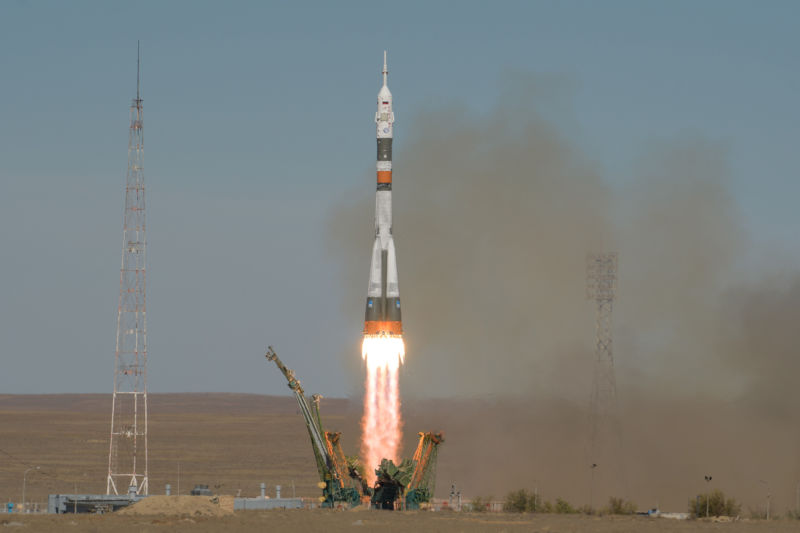Roscosmos plans to develop nuclear-powered rocket planes, according to a report by Ria Novosti reported.
The development of new technology should be carried out based the experience gained after the development of the Bor, Buran ships, the Baikal and the Angara-A5V launch vehicle.
“Planning for the future development of reusable space systems should also include the consideration of fundamentally new layouts, such as rocket planes with a nuclear propulsion system,” the Roscosmos development proposal reads.
Earlier it was reported that the resident of the Skolkovo fund, the company Ison, is developing a project of a reusable rocket plane designed for flights in the atmosphere and space at hypersonic speeds. It is assumed that the device will be able to fly at altitudes of up to 160 kilometers at speeds of seven sweeps, or to bring spacecraft into orbit at an altitude of up to 500 kilometers. Each such hypersonic device is designed for at least 50 flights.
It was also reported that in Russia, since 2010, a project has been worked on to create a transport and energy module based on a megawatt-class nuclear power propulsion system. The Roscosmos’ Keldysh Center is working on the engine along with the enterprises of Rosatom.
The use of a nuclear engine in spacecraft is being worked out by another enterprise in the rocket and space industry, the Arsenal Design Bureau.
Separately, on March 6th, Roscosmos and the Khrunichev Center announced that in the years 2019-2021 they would improve the reliability and efficiency of heavy-class Proton-M launch vehicles.
Earlier it was reported that in 2019, six launches of Proton-M missiles from the Baikonur cosmodrome are planned. The rocket is scheduled to operate until 2025. During this time about 20 rocket launches are planned.
“Comprehensive work to ensure the reliability of the Proton-M rocket launches will be continued. The management of Roscosmos and the Khrunichev Center decided to develop a similar program aimed at improving the reliability and efficiency of the Proton-M launch vehicle and the Briz-M booster unit over the next three-year period – 2019-2021,” – said in a statement posted on the website of the Khrunichev Center.
On February 13th, Deputy Director of the Institute of Astronomy of the Russian Academy of Sciences Mikhail Sachkov announced that Roscosmos intends to ut funding for the Spektr-UV space telescope three times in 2019, and another 10 times in 2020, which actually freezes work on the creation of the “Russian Hubble.”
“The last proposal, which is being discussed now, has not yet been approved, but the letter (from Roskosmos) Has already arrived: in 2019, the signed contract will be cut three times, 2020, from the planned cut, by 10 times, and from the original funding – 15 times. The saddest thing is that in 2021 there is also almost zero funding,” said the scientist.
The proposal to cut funding came together with the promise to return the funds in a few years, but scientists are not counting on it. “In 2022, substantial funding was promised, but usually, as soon as you approach the designated date, it drops to zero. If earlier we thought it was a wild thing to halve the funding, now a reduction of 10 times is the norm,” Sachkov said.
In January, Reuters reported that Russian scientists discovered a defect in Roscosmos’ new Angara-A5 heavy lift space rocket, that could destroy it in flight.
The Angara A5, which was test-launched in 2014, is being developed to replace the Proton M as Russia’s heavy lift rocket, capable of carrying payloads bigger than 20 tons into orbit. A launch pad for the new rocket is due to open in 2021.
According to a paper published by scientists at the rocket engine manufacturer Energomash, the engines of the Angara A5 could produce low frequency oscillations that could ultimately destroy the rocket.
A short while later, Ria Novosti reported that the problem had been eliminated and everything was in order, citing an official press release on Energomash website.
This possible setback also took place almost three months after a bent sensor led to a failure in a Soyuz rocket launch, which forced two astronauts to make an emergency landing.
The official reason, as per Roscosmos was that a sensor — which monitors the separation of the boosters from the rocket — was deformed, bent by about six degrees. Six degrees isn’t a lot, but it was enough to keep the lid of a nozzle on one of the boosters from opening. That booster then hit the fuel tank of the central part of the rocket, lurching it violently off course.
Thus, despite setbacks on some fronts, Roscosmos is still developing other systems and technologies that seem quite promising. It is also still globally the only manufacturer of space launch rockets.





If this nuclear engines technology is true it would be a complete stupid usage only for military purpose and not build a vehicle that can land on Mars or someplace far in the solar system. Russians, if you have it prove you are superior over western consumerism crap!
Could be a response to Lockheed claim that they will have prototype cold fusion engine by the end of this year. However I doubt both of these claims will happen so soon.